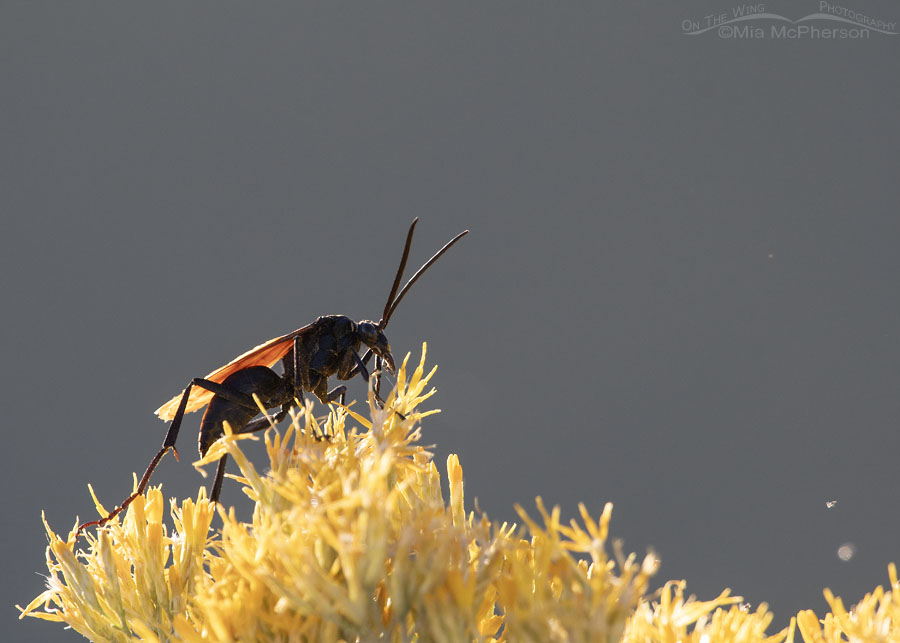I’ve been meaning to share this Tarantula-hawk Wasp photo that I took in the West Desert of Utah for about a year, and today is as good a day as any.
 Tarantula-hawk Wasp in the West Desert – Nikon D500, f7.1, 1/800, ISO 500, Nikkor 500mm VR with 1.4x TC, natural light
Tarantula-hawk Wasp in the West Desert – Nikon D500, f7.1, 1/800, ISO 500, Nikkor 500mm VR with 1.4x TC, natural light
I was out in a canyon in the sky island mountains of the West Desert, searching for birds. Since I was driving slowly, I was able to spot smaller subjects such as butterflies, bees, hoverflies, and wasps. As I rounded a curve in the road in my Jeep, a two-inch-long, large, colorful Tarantula-hawk Wasp caught my eye.
The wasp wasn’t in the best light, but I decided to photograph it anyway. It was the first and only time I have had this species in my viewfinder.
I made the best of the light that I had and hoped the wasp would move to a location with better light. It didn’t and flew off out of my sight, so I am glad I took the photos that I did. I’ve identified this as a Thisbe’s Tarantula-hawk Wasp, but if I am incorrect, please don’t hesitate to correct me.
I was thrilled to photograph this Tarantula-hawk Wasp in the same mountains where I found and photographed a Desert Tarantula in September of 2020.
Facts about Tarantula-Hawk Wasps:
The females of this wasp species sting tarantulas between the legs to paralyze them. Then, they drag the spider to a specially prepared burrow, where they lay a single egg on the spider’s abdomen and cover the burrow entrance. The larva then consumes the still-living host.
I wasn’t worried or even the least bit concerned about this large wasp stinging me because I knew it didn’t see me as a threat or as a tarantula. However, I feel that I should state that, from everything I have read, their stings are incredibly painful. Just a word of caution!
The cycle of life in the natural world always fascinates me.
Life is good.
Mia
Click here to see more of my insect and spider photos.





Now THAT is one giant fearsome beastie! The back-light seems to make her even more malevolent, otherworldly and downright scary. If I was a tarantula I’d buy a box of Depends and hide under a rock. Wonderful shot. Thanks Mia.
Fascinating! I feel bad for the tarantula — what a way to go.
What an amazing creature (and capture). How I wish I had your eyes (and knowledge).
Wow that is a big wasp. Good thing I have never run across any. If I ever see one I will know that tarantula are also near. I must say you did a nice job in getting the photo of her.
That is such a brilliant, colorful, and repulsive insect, all at the same time. Yes, stinging insects are gross, but they help maintain balance so I appreciate them (unless they’re in my house)
amazing shot Mia, I really like unusual and creatures I’ve never seen or probably overlooked!